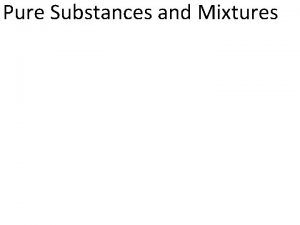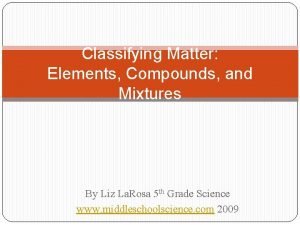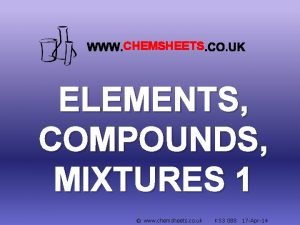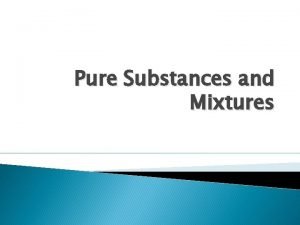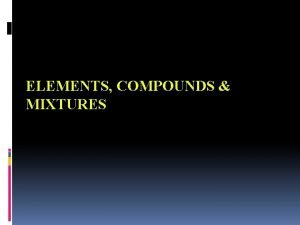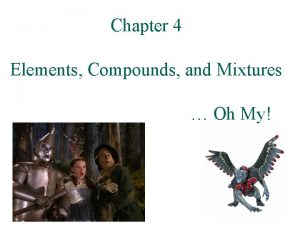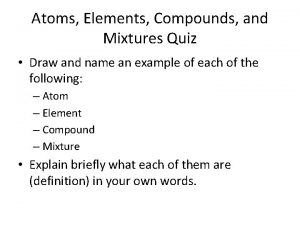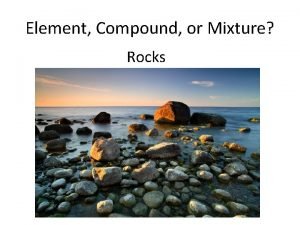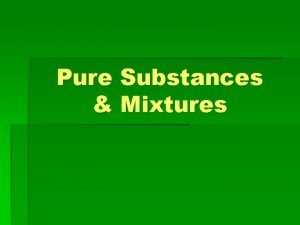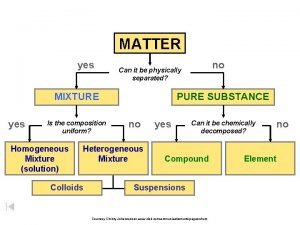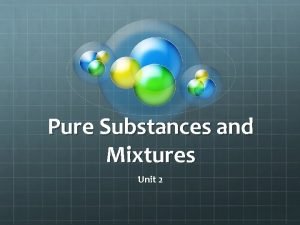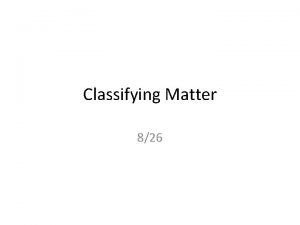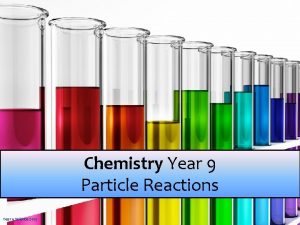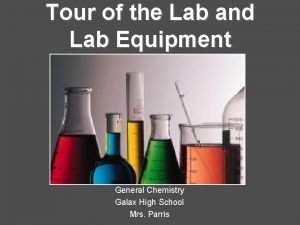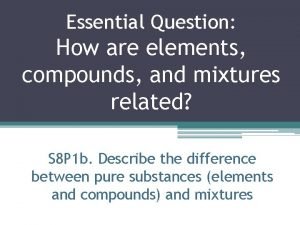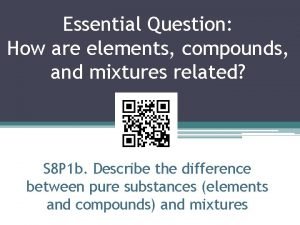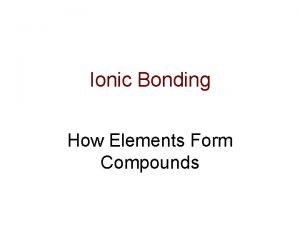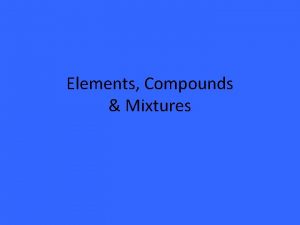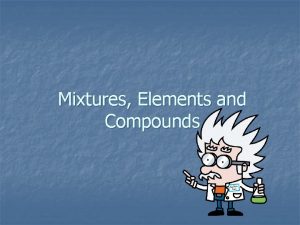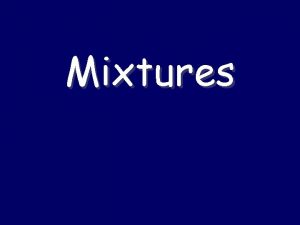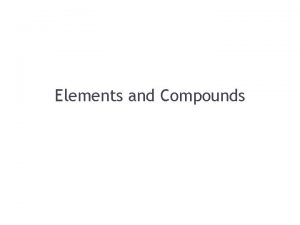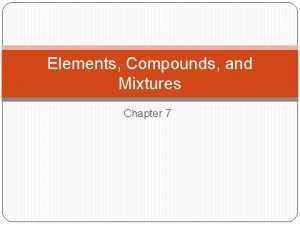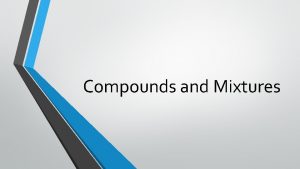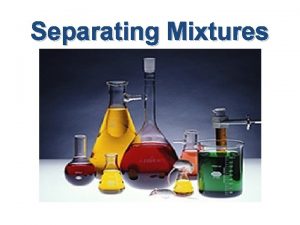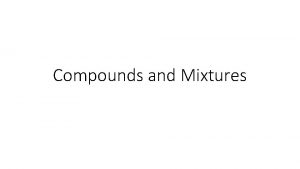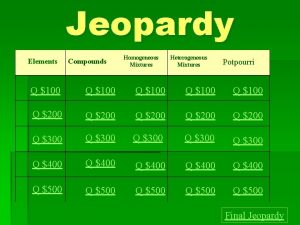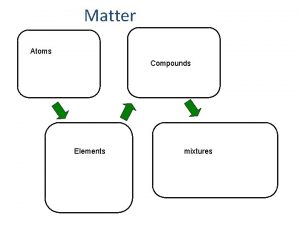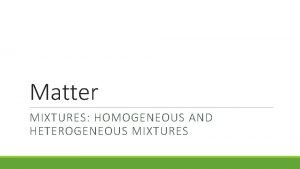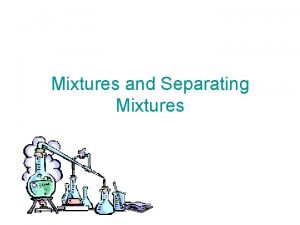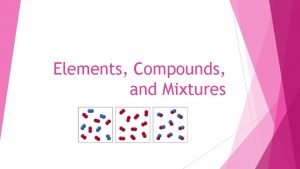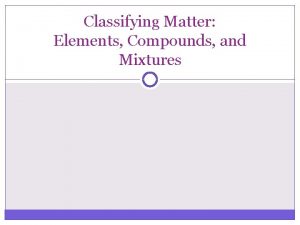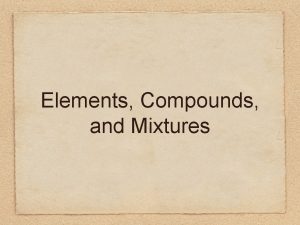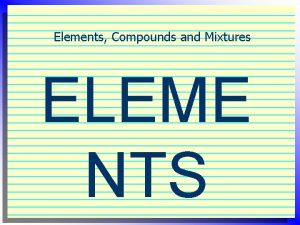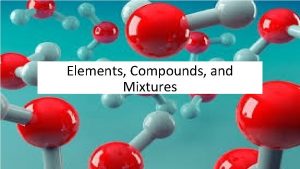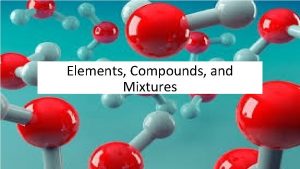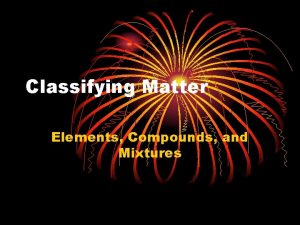Elements Compounds and Mixtures 1 Which of the






























- Slides: 30

Elements, Compounds, and Mixtures

1. Which of the bottles pictured above contain matter? • All the bottles contain matter.

2. Which of the bottles contain a single pure substance? • Bottles (a) and (b).

3. Explain your answer to question #2. • Pure substances include elements and compounds.

4. How many elements are present in each molecule of water? • Two.

5. What is the ratio of hydrogen atoms to oxygen atoms in a water molecule? • Two hydrogens for each oxygen.

6. As you know, ice is frozen water. What would you expect the ratio of hydrogen atoms to oxygen atoms to be in a molecule of ice? • Two hydrogens for each oxygen. 7. Explain your answer to question #6 • Ice and water are the same substance (H 2 O)

8. Bottles (c) and (d) both contain mixtures. How are these mixtures similar? • They are both mixtures of hydrogen and oxygen.

9. Bottles (c) and (d) both contain mixtures. How are these mixtures different ? • The amounts of hydrogen and oxygen vary.

10. How can we prove that saltwater is a mixture? • By separating it into salt and water through physical means. Or • By having samples of saltwater that vary in the ratio of salt and water.

11 a. Rice Pudding

a. Rice Pudding Heterogeneous mixture

b. Copper

b. Copper Element

c. Propane

c. Propane C 3 H 8 compound

d. Air

d. Air Homogeneous Mixture (Solution)

e. Magnesium Chloride

e. Magnesium Chloride Mg. Cl 2 compound

f. Mercury

f. Mercury Element

g. Maple Syrup

g. Maple Syrup Homogeneous Mixture (Solution)

h. Baking Soda

h. Baking Soda Na. HCO 3 compound

i. Chex Party Mix

i. Chex Party Mix Heterogeneous mixture

j. White Gold

j. White Gold An alloy of gold and a white metal such as nickel or palladium Homogeneous Mixture (Solution)
 Elements compounds and mixtures 1 worksheet answers
Elements compounds and mixtures 1 worksheet answers Which are pure substances
Which are pure substances Periodic table mixtures
Periodic table mixtures Types of matter elements compounds and mixtures
Types of matter elements compounds and mixtures Www.chemsheets
Www.chemsheets Mixtures graphic organizer
Mixtures graphic organizer Elements compounds and mixtures graphic organizer
Elements compounds and mixtures graphic organizer Elements compounds and mixtures oh my worksheet
Elements compounds and mixtures oh my worksheet Elements compounds and mixtures quiz
Elements compounds and mixtures quiz Rocks
Rocks Is sugar a pure substance
Is sugar a pure substance Composition uniform
Composition uniform Compounds vs mixtures
Compounds vs mixtures Ionic, covalent and metallic bonds venn diagram
Ionic, covalent and metallic bonds venn diagram Honey homogeneous or heterogeneous
Honey homogeneous or heterogeneous Substance
Substance Is a bag of m&ms a mixture or pure substance
Is a bag of m&ms a mixture or pure substance Elements and compounds examples
Elements and compounds examples Section 1 atoms elements and compounds
Section 1 atoms elements and compounds Chapter 6 section 1 atoms elements and compounds
Chapter 6 section 1 atoms elements and compounds Laboratory equipment
Laboratory equipment Solution
Solution Substance
Substance Chapter 6 section 1 atoms elements and compounds
Chapter 6 section 1 atoms elements and compounds What are drama elements
What are drama elements When elements combine to form compounds
When elements combine to form compounds How elements form compounds
How elements form compounds Venn diagram compare and contrast mixtures and solutions
Venn diagram compare and contrast mixtures and solutions Hát kết hợp bộ gõ cơ thể
Hát kết hợp bộ gõ cơ thể Slidetodoc
Slidetodoc Bổ thể
Bổ thể

